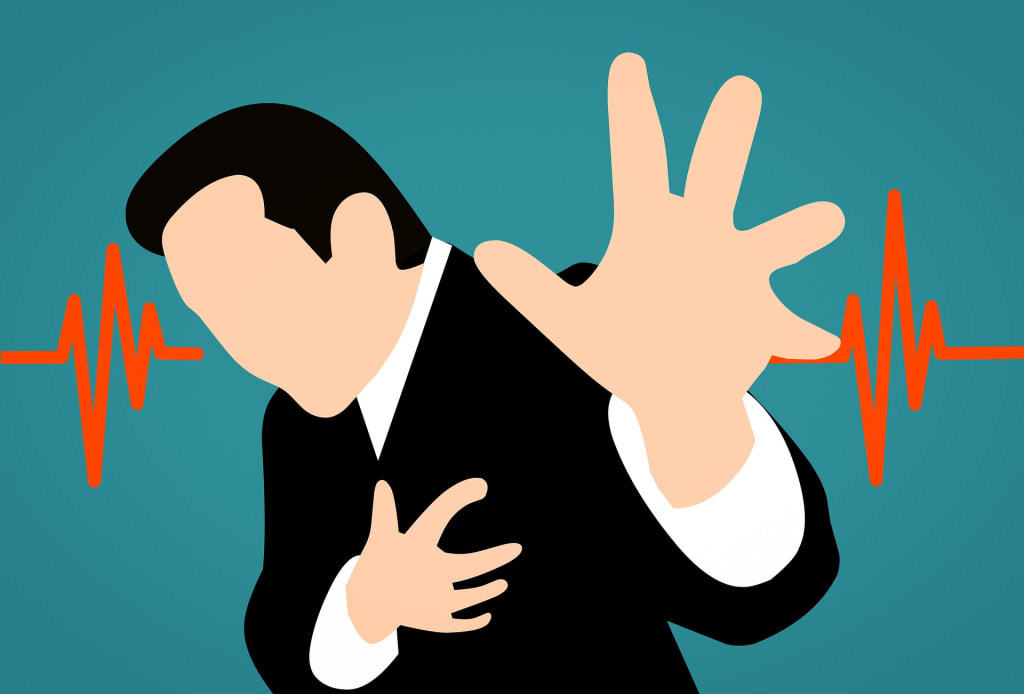When it comes to the risk of heart failure, more inches may be more significant than extra pounds.
Recent studies found that each inch of waist circumference raised heart failure risk by 11%.

According to the meteoric rise in popularity of athleisure clothing, many of us have chosen to use the wonder of elastic to reduce the additional epidemic pounds around our stomach. Unfortunately, in addition to straining your waistline, those additional inches can also be harming your heart. According to a recent study from Oxford University, waist circumference poses a bigger danger to heart health than total weight since every additional inch of belly fat raises the relative risk of heart failure by 11%. A presentation of the study was made at the 2022 European Society of Cardiology Congress, which took place in Barcelona, Spain, from August 26–29.
The finding that belly fat or weight in the middle is linked to a higher risk of heart failure isn't particularly shocking, but Francisco Lopez-Jimenez, MD, a cardiologist and researcher at Mayo Clinic in Rochester, Minnesota, who was not involved in this study, believes that more people should be aware of this risk factor. We need to go deeper, he argues, despite the fact that obesity is a proven risk factor for heart failure. According to Dr. Lopez-Jimenez, "the kind of fat may make a substantial difference in a person's risk for cardiac episodes and heart failure."
Why Belly Fat Is Important for Heart Health
Waist circumference and overweight and obesity have both risen steadily in the US during the last several decades. According to the Centers for Disease Control and Prevention, the average waist size for women is 38.7 inches, up from 36.3 inches in 1999-2000, while the average midsection size for males is 40.5 inches, up from 39 inches in 1999-2000. (CDC).
According to Lopez-Jimenez, where we carry our fat has an impact on our heart and general wellness. Deeper belly fat, or visceral fat that builds up around internal organs like the pancreas, liver, and small and large intestines, differs significantly from fat found beneath the skin, according to the expert. According to Lopez-Jimenez, this sort of fat has been more closely linked to inflammation, another component that affects the heart, arteries, and other parts of the body.
Although there isn't a set recommendation for waist size, as long as your BMI is within a healthy level, it's generally believed that smaller is better. For women, a measurement of more than 35 inches and for males, a measurement of larger than 40 inches qualifies as abdominal obesity. Maintaining a waist size that is less than half your height is a good general guideline, he advises. So, ideally, a person who is 6 feet tall should have a waist size of fewer than 36 inches.
According to the Centers for Disease Control and Prevention, waist circumference is measured around the midsection at or close to the belly button, not where you button your trousers or where your size is listed (CDC).
Every Additional Inch of Belly Fat Increased the Risk of Heart Failure
Researchers examined information from the UK Biobank on 428,087 individuals to determine the association between heart failure and BMI, waist circumference, and waist-hip ratio. Over half a million individuals in England, Wales, and Scotland were recruited for the UK Biobank between 2006 and 2010 to provide blood, urine, and saliva samples as well as comprehensive health data for study on a variety of ailments.
Participants ranged in age from 40 to 70, with a gender split of 56% women to 44% males and an average age of 56. The average BMI was 26.9 for women and 27.7 for men, while the average waist size was 33 inches for women and 38 inches for men.
Overweight is defined as having a BMI of 25 to 29.9, while obesity is defined as having a BMI of 30 or above. The same method is used to determine a person's BMI depending on their height and weight.
Each of the three measurements—BMI, waist circumference, and waist-to-hip ratio—was classified into quintiles (five groups) by the researchers, with the highest quintile being the average participant and the lowest quintile representing the lowest.
There were 8,669 first-ever incident heart failure (HF) occurrences during the course of the roughly 13-year follow-up: 5,205 in men and 3,464 in women. There was a greater chance of a cardiac event, such as a heart attack, stroke, or abnormal heart rhythm, with every extra inch above a healthy waist size.
The risk of cardiovascular disease was 3.21 times higher in the group with the highest waistlines than in the group with the lowest waists. The risk of developing heart failure was only 2.65 times higher in individuals with the highest body mass index (BMI) than in those with the lowest. Heart failure risk increases by 9% for every additional unit of BMI.
Why Heart Failure Risk Is Increased by Belly Fat
According to the Centers for Disease Control and Prevention, HF affects 6.2 million individuals in the US and causes 1 in 8 fatalities (CDC).
According to the American Heart Association, HF causes the heart to be unable to pump enough blood to fulfill the body's needs for oxygen and blood (AHA). The heart attempts to make up for this in a number of ways, including by becoming bigger, gaining more muscle mass, and pumping more quickly. According to the AHA, the rest of the body attempts to make up for the shortage by directing blood away from less vital tissues and organs, and the blood arteries contract to maintain blood pressure.
According to Lopez-Jimenez, obesity may cause heart failure in a number of different ways. He claims that central obesity "indirectly" poses a significant risk for high blood pressure, which is one of the primary causes of heart failure.
More specifically, he claims that fat boosts the circulatory system's release of several hormones that cause the thickening, or hypertrophy, of the heart. According to Lopez-Jimenez, "the walls of the heart thicken and ultimately grow stiffer, which prevents the heart from being able to expand enough to obtain the quantity of blood it needs to pump out to the other organs."
According to him, obesity makes the heart work harder as well. "Those who are obese have more blood than those who are at a healthy weight. A person with 40 or 50 pounds of additional fat will have much more blood since every pound of fat takes more blood, according to Lopez-Jimenez. That's important for those with heart failure because it means the heart needs to pump more blood each minute, which gradually wears down the heart.
People who are "skinny fat" are more likely to die from a heart attack or a stroke.
According to Lopez-Jimenez, the research doesn't truly address the issue of normal weight obesity, which is the condition in which an individual has a greater waist or belly circumference but maintains a normal weight based on their BMI. According to the evidence, these persons are even more likely to die [generally] and from cardiac events.
He argues that if a person has a normal BMI but a larger waist circumference, they most likely don't have adequate muscle mass. According to Lopez-Jimenez, muscle is vital because it aids the heart, plays a significant defensive function, and is essential for metabolic health and calorie burning.
"Unfortunately, a lot of individuals who are normal weight obese are unaware that they are at danger because they believe they are healthy and don't feel pressured to exercise or reduce weight. It's been overlooked for years, but it's a perilous combination for heart health, so we're trying to raise awareness of it," he adds.
About the Creator
Enjoyed the story? Support the Creator.
Subscribe for free to receive all their stories in your feed. You could also pledge your support or give them a one-off tip, letting them know you appreciate their work.






Comments
There are no comments for this story
Be the first to respond and start the conversation.